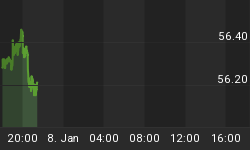It was announced this weekend that Spain will receive $125 billion (100 billion Euros) to recapitalize their banking system. The money for the bailout will be channeled through the Fund for Orderly Bank Restructuring (FROB), whose funds count towards public debt.
The consequences will prove to be dire from bailing out banks by increasing European sovereign debt levels. Nations already teetering on bankruptcy will now borrow more money at higher market rates and then hope to get paid back a measly 3% from Spain. In spite of that ridiculous "solution", the current view among global financial markets is that Europe can solve its problems by applying the same elixir as the U.S. did during our credit crisis back in 2008.
Namely, the European Union now claims that by ring-fencing their banking system, starting with Spain, the European debt crisis will simply disappear. By adopting this philosophy, politicians have illustrated their complete lack of understanding regarding the true structure of the problem.
Regardless of how successful the bank bailout will become, it ignores the difference between the American credit crisis of 2008 and the current debt crisis over in Europe. The U.S. housing and credit crisis was primarily a banking problem caused by eroding real estate related assets that rendered many banks insolvent.
Therefore, all that needed to be done was: Have the government borrow money to inject capital into banks, for the Fed to liquefy the financial system, to increase the level of deposit insurance, to guarantee bank debt and interbank lending and then to repeal the mark-to-market account rule that required bank assets to be valued at their current market price. Problem solved. Except that we expedited the U.S. a few years closer to a complete currency and bond market collapse ... but that's a commentary for another day.
The basic belief now held on both sides of the Atlantic is that if you can fix the banks, you've solved all of the problems. But the U.S. enjoyed a debt to GDP ratio of just 60% at the start of our credit crisis -- a level that would have even met the qualifications of the Maastricht Treaty. And it owned the world's reserve currency as well.
At that time, the U.S. was able to borrow the money needed to recapitalize the banks. That allowed the U.S. a few more years before having to address the unsustainable level of aggregate debt. It basically amounted to a balance sheet shell game where the private sector's bank debt was dumped onto the public sector, which now has a debt to GDP ratio of over 100%. So I guess we shouldn't try that trick again.
Turning to Europe today, their gross debt is just about 90% of GDP and the euro isn't used as the world's reserve currency. The onerous level of public sector debt was already high enough to send bond markets in Southern Europe and Ireland into full revolt.
So here's the big difference; U.S. financial institutions were insolvent due to rapidly-depreciating real estate related assets. But European banks are insolvent in part because they own the bad debt of insolvent European nations. If Europe's sovereigns are already insolvent because they owe too much money, how can they go further into debt to bail out their banking system?
Even if they are willing and able to borrow more money, their debt to GDP ratios would soar even higher and cause further downgrades of their debt. Therefore, sovereign bond prices would decline much lower and cause Europe's banks to fall further into insolvency.
The truth is that the only entity outside of China that can bail out Europe is the ECB. That, I believe, is the eventual "solution" that will be applied to Europe's mess. Of course, the inflationary default on European debt will wreak havoc on their economies, bond markets and currency.
So there is simply no magic bullet or elixir that can save Europe from a tremendous amount of pain -- and you can add Japan and America into that mix as well. The market rallied last week in anticipation of some banking solution in Europe -- or at least the re-entry of massive central bank intervention. All we have right now is an insufficient bailout of certain Spanish banks, which will do little to address spiking debt service payments on European bonds and nothing to bring down debt to GDP ratios of other European nations.
However, once this latest "solution" fails as well, all eyes will turn back toward Mario Draghi and his printing press to finally attempt to inflate the debt away.
After the euphoria from the Spanish bailout ends, look for sovereign bond yields to once again rise, along with credit default swaps on that debt. Also, look for the dollar to carry on rising against the euro, and for global markets to continue lower.
















